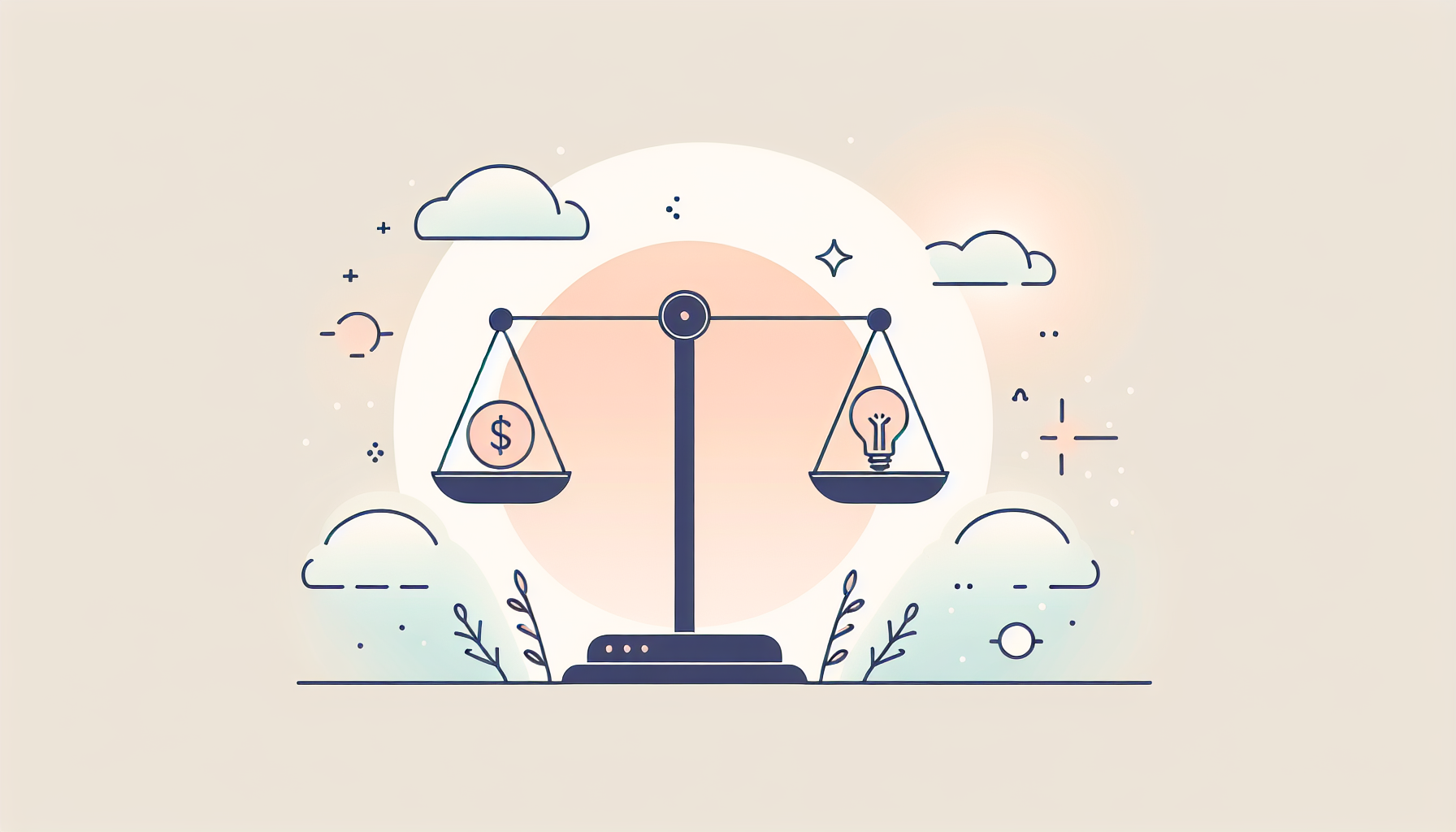Cost-benefit analysis can feel like a complex puzzle, right? You might be wondering how to weigh all the different factors or if you’re even asking the right questions. Trust me, you’re not alone in feeling a bit overwhelmed by the process.
But hang tight! If you stick around, I’ll share some fantastic prompts that will simplify your cost-benefit analysis and help you make more informed decisions. You’ll soon find yourself navigating this process with confidence and clarity.
We’ll dive into effective prompts, key elements to include, and even some common pitfalls to avoid. By the end, you’ll be well-equipped to tackle cost-benefit analysis like a pro!
Key Takeaways
- Cost-benefit analysis can be simplified using clear and specific prompts to guide your evaluation.
- Effective prompts should include essential details like costs, benefits, and the project context.
- Examples of useful prompts include comparing marketing strategies or evaluating employee training programs.
- Using ChatGPT can save time, improve accuracy, and generate structured outputs for clearer discussions.
- Iterate and refine your prompts based on feedback to achieve more in-depth analysis.

Best ChatGPT Prompts for Cost-Benefit Analysis
When it comes to performing effective cost-benefit analysis, using precise prompts for ChatGPT can streamline the process significantly.
Here are some of the best prompts you can use:
- “Analyze the costs and benefits of implementing a remote work policy in a mid-sized company.”
- “Evaluate the financial implications of launching a new marketing campaign versus increasing the budget for existing campaigns.”
- “Compare the benefits of investing in employee training programs versus hiring new staff.”
- “Assess the cost-effectiveness of using solar energy for a small business compared to traditional energy sources.”
These prompts can help target specific areas that need analysis and get straightforward evaluations.
How to Use Cost-Benefit Analysis Prompts Effectively
Using cost-benefit analysis prompts effectively is all about clarity and specificity.
Start by clearly defining the decision or project you’re analyzing.
Next, ensure that your prompt includes key details such as costs (financial and non-financial) and expected benefits.
For instance, a prompt like “Evaluate the pros and cons of adopting a new software system in a non-profit organization” gives ChatGPT the necessary context to provide a thorough analysis.
Finally, consider iterating your prompts based on the responses you receive—refine them for better clarity to achieve the analytical depth you need.
Key Elements of a Cost-Benefit Analysis Prompt
Creating effective prompts for cost-benefit analysis involves understanding its essential components.
First, ensure that your prompt is focused—be specific about the scenario to be analyzed.
Second, include metrics for evaluation, such as cost estimates and qualitative or quantitative benefits.
For example, a prompt could be, “List the costs and benefits of implementing a new recycling initiative in a corporate setting, including initial expenses and long-term savings.”
Finally, request a structured output if necessary, such as a bulleted list or a summary table, to enhance readability and understanding.
Examples of Cost-Benefit Analysis Prompts
Ready to see some practical examples? Here are various prompts you can use to engage ChatGPT effectively:
- “Create a cost-benefit analysis for a city considering the addition of bike lanes.”
- “Determine the financial impact of switching to an all-remote workforce for a tech startup.”
- “Examine the implications of increasing product pricing versus keeping prices stable in a recession.”
- “Generate a comparison of costs vs. benefits for launching a social media campaign targeted at millennials.”
These examples provide a starting point for in-depth analysis and can be tweaked depending on your specific situation.

Benefits of Using ChatGPT for Cost-Benefit Analysis
Utilizing ChatGPT for cost-benefit analysis can significantly enhance the efficiency and accuracy of your assessments.
One of the biggest advantages is time savings; ChatGPT can quickly process information and generate evaluations, freeing you up to focus on strategy.
Accuracy is another key benefit; the AI can help identify overlooked factors, ensuring a comprehensive view of costs and benefits.
ChatGPT produces structured outputs that are easy to interpret, which can streamline team discussions and presentations.
Moreover, as you use ChatGPT, it learns from your inputs and feedback, making it better suited to your specific needs over time.
With its ability to provide multiple scenarios and projections, you can explore various options with ease, leading to more informed decision-making.
ChatGPT also allows for iterative testing of scenarios, empowering you to refine your analysis based on evolving situations.
Tips for Crafting Your Own Cost-Benefit Analysis Prompts
Crafting effective prompts for cost-benefit analysis takes some practice, but a few tips can make the process smoother.
First, be specific about what you want analyzed; broad prompts can lead to vague responses.
Use clear, direct language that includes all necessary details, including time frames and metrics.
For example, instead of asking, “What are the costs of a marketing campaign?” try, “Outline the initial and recurring costs of a six-month social media marketing campaign.”
To ensure clarity, consider structuring your prompts as questions that guide ChatGPT to focus on the metrics that matter most.
Iterate and refine your prompts based on the feedback and outputs you receive to continually enhance the quality of the analysis.
Finally, whenever possible, provide context that might affect the analysis, like industry standards or specific company situations, to generate tailored insights.
Here are some actionable prompts you can copy and adapt:
- “Identify the costs and benefits of expanding a product line in the current economic climate.”
- “Assess the financial return on investment (ROI) for implementing a sustainable sourcing strategy over the next five years.”
- “Evaluate the total costs associated with upgrading software systems versus the expected operational efficiency gains.”
- “Analyze the benefits of launching an employee wellness program in relation to healthcare costs and productivity.”

Common Mistakes to Avoid in Cost-Benefit Analysis Prompts
Avoiding common mistakes in cost-benefit analysis prompts can save you time and improve the quality of your results.
One major mistake is being ambiguous; prompts that lack clarity will lead to vague outputs.
For instance, asking, “What are the costs?” doesn’t provide enough context and can cause ChatGPT to generate unhelpful information.
Additionally, failing to provide specific metrics can hinder the depth of the analysis.
Another pitfall is overcomplicating your prompts; simplicity often leads to clearer and more actionable responses.
Ignoring stakeholder perspectives is also a significant oversight; understanding how decisions affect different parties can reveal insights that benefit your analysis.
Lastly, don’t forget to validate the outputs; treating AI-generated responses as absolute can lead to misguided conclusions.
To help you avoid these mistakes, consider these prompts:
- “Identify potential pitfalls in assessing the economic impact of a community park project.”
- “Suggest improvements to a cost-benefit analysis for a new product launch that addresses common weaknesses.”
- “List the factors to consider when evaluating the success of implementing a new technology in a small business.”
Conclusion: Enhancing Your Cost-Benefit Analysis with ChatGPT Prompts
In conclusion, leveraging ChatGPT for cost-benefit analysis can significantly enhance your decision-making processes.
By implementing effective prompts, you open the door to comprehensive evaluations that consider various perspectives.
Make sure you avoid common pitfalls to maximize the efficacy of your analysis.
As you refine your prompts and learn from each interaction, the insights generated will become increasingly relevant to your specific needs.
Incorporating AI into your analysis not only improves efficiency but also supports informed decision-making.
Start experimenting with the provided prompts to elevate your analysis today.
Remember, the more you practice crafting targeted prompts, the better your results will be.
Stay engaged and continue exploring the potential of AI tools like ChatGPT in your analytical endeavors!
FAQs
A cost-benefit analysis prompt for ChatGPT is a structured question or instruction designed to guide the model in evaluating the economic viability of a project by weighing its anticipated costs against potential benefits.
To use ChatGPT effectively for cost-benefit analysis, create clear and specific prompts that outline the project details, expected costs, and projected benefits. This clarity helps the model generate insightful and relevant evaluations.
Common mistakes include being vague, not providing sufficient context, and overlooking important variables. Ensure prompts are detailed and specific to avoid confusion and improve the accuracy of the analysis generated by ChatGPT.
Using ChatGPT for cost-benefit analysis provides quick insights, generates comprehensive evaluations, and can uncover perspectives that may have been overlooked. It enhances decision-making by streamlining complex data interpretation into accessible information.
